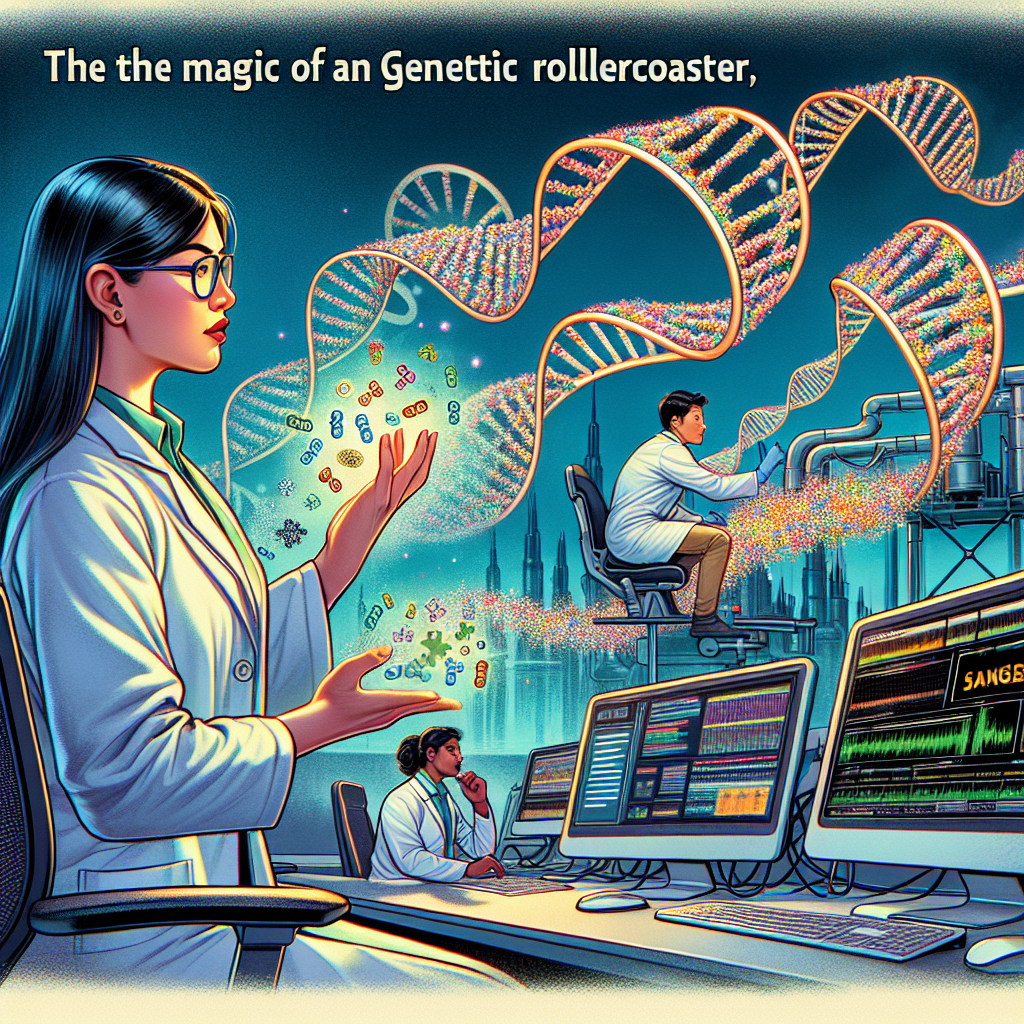🧬 GENE SEQUENCING🧬

🧬 Gene Sequencing: Unlocking the Door to the World of Genetics 🧬
Gene sequencing is an amazing process that allows us to delve into the depths of our genetic code. 🧬✨
⚙️ What is gene sequencing? ⚙️
Gene sequencing is a technology that enables us to determine the sequence of nucleotides in DNA. It's like deciphering a secret message that resides in each of our cells. 🔍🔬
🔬 How does gene sequencing work? 🔬
In the process of gene sequencing, scientists use various methods and tools to read the sequence of nucleotides. They break down the DNA into small fragments and sequentially determine which nucleotides are present in each fragment. Then, with the help of computer algorithms, these fragments are assembled into a unified sequence, creating a complete description of the genetic code. 🧩🔎
To read the sequence of nucleotides, there are several methods and tools available. Here are some commonly used approaches:
Sanger Sequencing
🧪:Sanger sequencing, also known as chain-termination sequencing or dideoxy sequencing, is a widely used method for DNA sequencing. It involves replicating the DNA using DNA polymerase and incorporating fluorescently labeled chain-terminating nucleotides. The resulting fragments are separated by size using capillary electrophoresis, and the sequence is determined by analyzing the fluorescent signals emitted by the labeled nucleotides .
Next-Generation Sequencing (NGS)
🌟:Next-generation sequencing technologies have revolutionized DNA sequencing by enabling high-throughput sequencing of millions of DNA fragments in parallel. NGS methods, such as Illumina sequencing, use various approaches to capture and sequence DNA fragments. These methods involve fragmenting the DNA, attaching adapters, amplifying the fragments, and sequencing them using different chemistries.
Third-Generation Sequencing
🚀:Third-generation sequencing technologies, such as PacBio and nanopore sequencing, offer long-read sequencing capabilities. PacBio sequencing utilizes single-molecule real-time (SMRT) technology, which allows for long reads and the detection of nucleotide modifications. Nanopore sequencing involves passing DNA strands through nanopores and measuring changes in electrical current as nucleotides pass through, enabling real-time sequencing .
Sequence Analysis Software 💻:
Various software tools are available for analyzing and interpreting DNA sequences. These tools assist in tasks such as sequence alignment, identification of genes and regulatory elements, variant calling, and functional annotation. Examples of popular sequence analysis software include BLAST, CLC Genomics Workbench, and the Sequence Manipulation Suite. It's important to note that the choice of method and tools depends on the specific requirements of the sequencing project, such as read length, throughput, and budget. Advances in sequencing technologies continue to drive innovation in the field, leading to the development of new methods and tools for reading nucleotide sequences.
🌍 The Significance of Gene Sequencing 🌍
Gene sequencing holds immense value in the fields of science and medicine. It allows researchers to understand which genes are associated with various diseases and helps in developing innovative methods for treatment and prevention of genetic disorders. It opens new horizons in the field of medicine and helps us better understand our own genetic essence. 💡💉
🌈 Conclusions 🌈
Gene sequencing is an exciting exploration that allows us to dive into the world of genetics and gain a better understanding of ourselves. It's like embarking on a journey through our own genetic map, unlocking new possibilities for science and medicine. 🚀🧬 Don't settle for what has been achieved! Explore, discover, and conquer new frontiers of genetic discoveries! 💪💡
